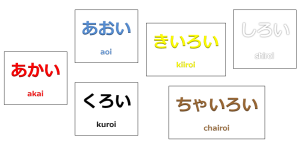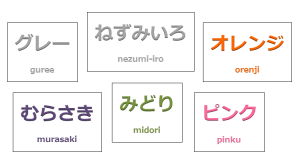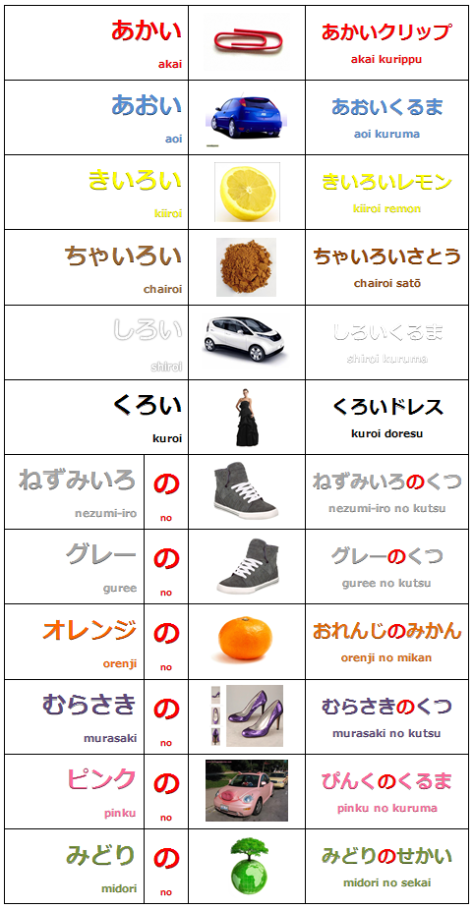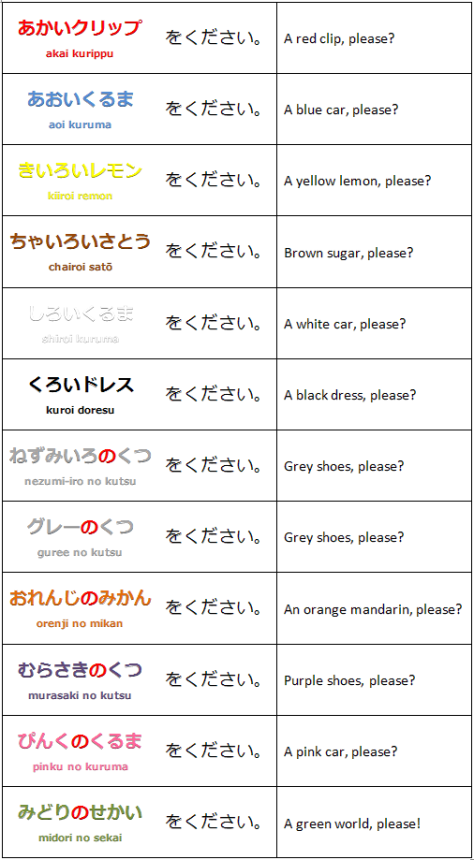More about adjectives: (see also the colours page)
thinking…thinking…
Uuuhhhh… yes.
There are three types of adjectives in Japanese:
-
~ い adjectives
-
~ な adjectives
-
~ の adjectives
To tell them apart is easy, because all adjectives that end in い are い adjectives. All adjectives that don’t end in い are not. Except for less-then-a-hand-full of them. They look on the outside like い adjectives, but they are not. The reason is the original kanji used for these adjectives. Never mind.
These are the four exceptions:
(These adjectives LOOK like い adjectives, but they are な adjectives)
These 4 adjectives are な adjectives! Have a look at the following chart. The groups are clearly separated.
This is a little commercial break.
Make a tea or something.
Have some happy thoughts.
And back to reality again:
The last question that might interest you: which are な and which are の adjectives. That question is trickier. Nouns and pronouns can be used as adjectives and then they are の adjectives.
But how do you know what is a noun used adjectivally? Feeling – you get a feeling for it. And a dictionary helps. To be realistic, as you learn words you feel straightaway whether it is a な adjective or not. In reality there is not really a problem. As you go along you learn the な adjectives. On another page we will give you a list of the most commonly used な adjectives, if that helps, with the same NCEA305 number.
Oddly enough, the only adjectives that cause hassles are a handful of の colours and they fall in this group.
みどり is the most-commonly-done-wrong の adjective.





























































































































